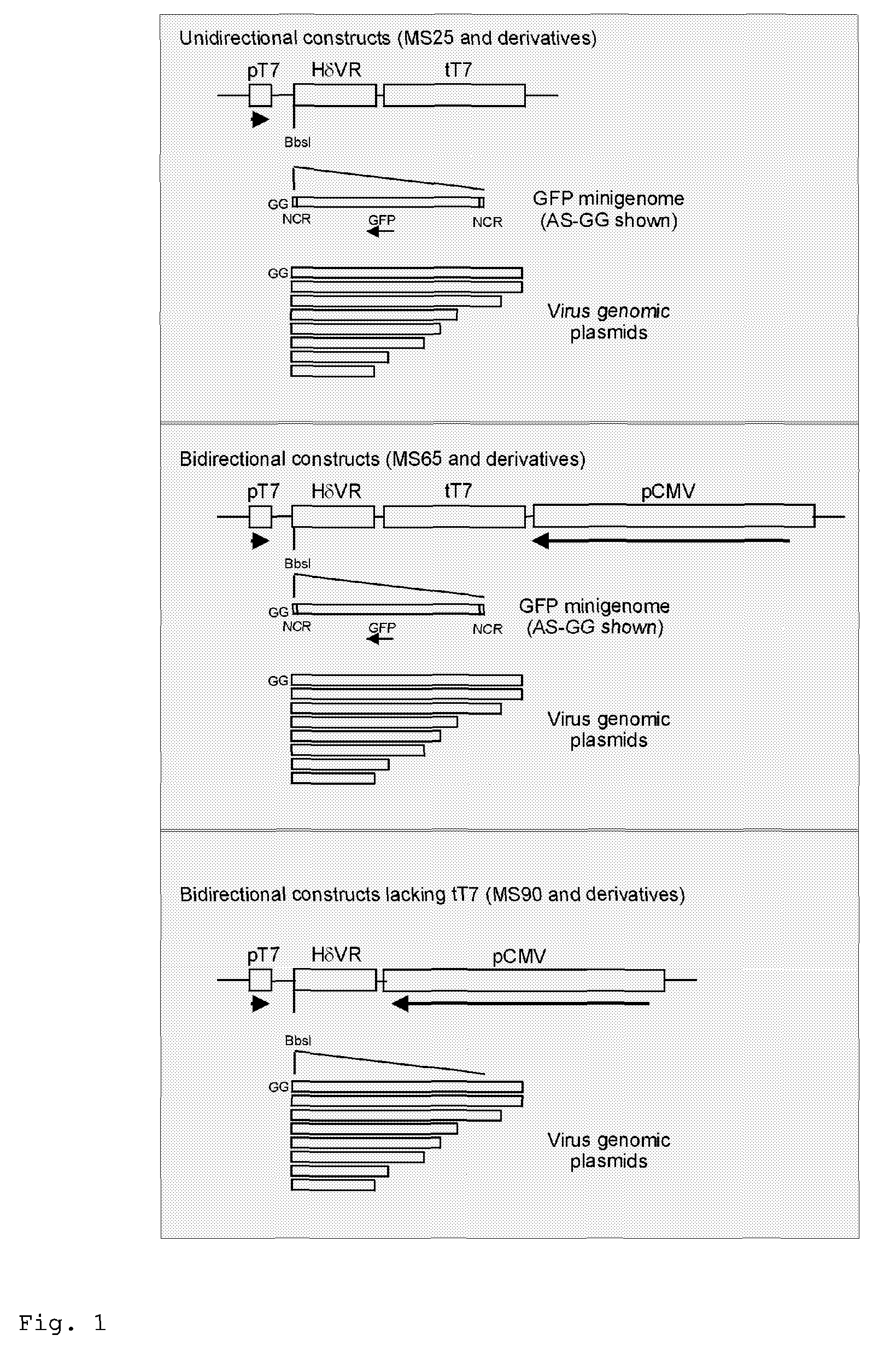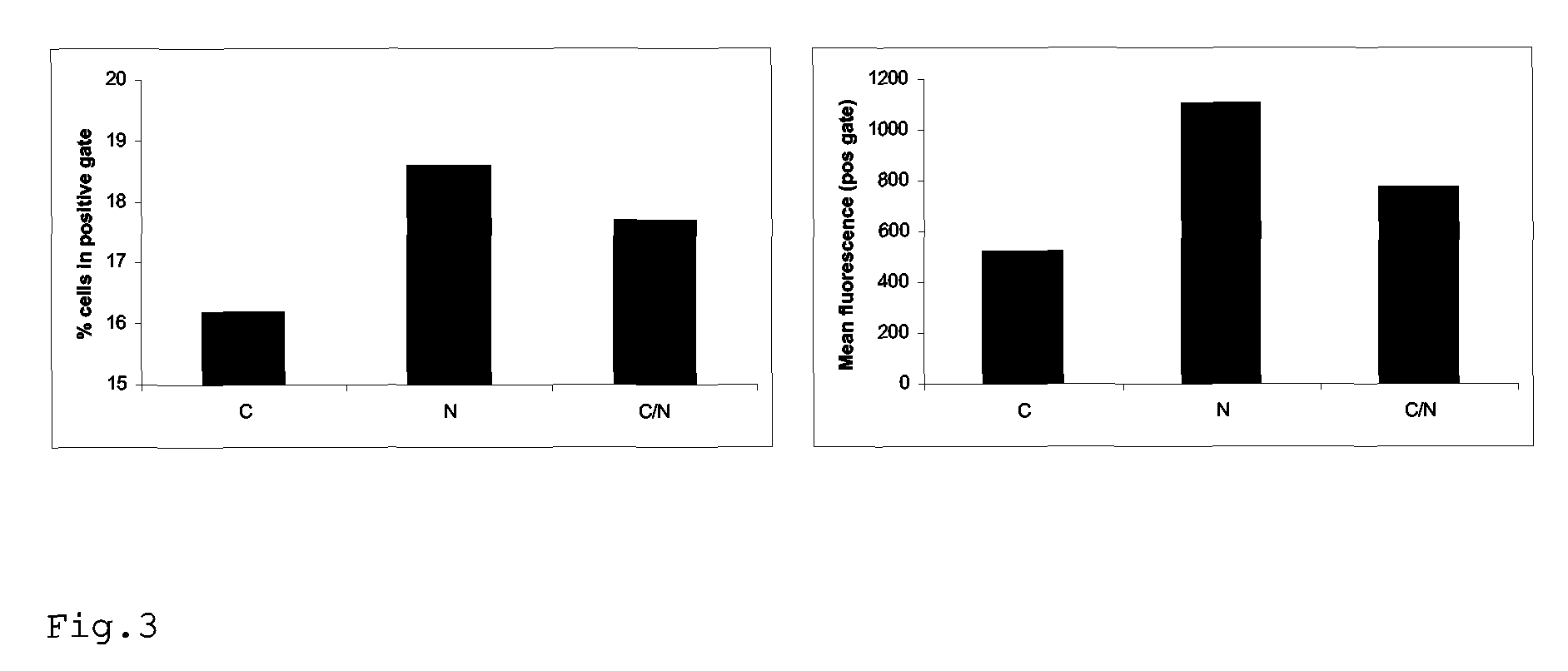Rescue of influenza virus
a technology for influenza viruses and vaccines, applied in the field of influenza virus vaccine production, can solve the problems of unfavorable vaccine development of reverse genetics systems based on bacteriophage polymerase technology, species-specificity of polymerase i reverse genetic systems,
- Summary
- Abstract
- Description
- Claims
- Application Information
AI Technical Summary
Benefits of technology
Problems solved by technology
Method used
Image
Examples
example 1
Generation of Recombinant Influenza A Virus Using a T7 RNA Polymerase Based Reverse Genetics System
Introduction
[0031]For a long time, the fundamental research of influenza A viruses has been hampered by the lack of availability of efficient reverse genetics systems. Although the earliest reverse genetics techniques for negative stranded RNA viruses were in fact developed for influenza A virus (7, 18), the rescue of this virus exclusively from recombinant DNA was achieved only recently (9, 20).
[0032]Influenza A virus is a negative strand RNA virus. During the virus replication cycle, three types of RNA are produced: negative sense genomic viral RNA (vRNA), positive sense RNA complementary to the genomic RNA (cRNA) and positive sense messenger RNA (mRNA). Whereas the vRNA and cRNA contain essentially unmodified ends, the mRNA is capped and has a poly(A) tail (16).
[0033]RNA polymerase I (PolI) is a nucleolar enzyme that transcribes ribosomal RNA (rRNA) and is abundantly expressed in gr...
example 2
[0104]Recombinant virus is produced as above, based on a high-throughput virus backbone (eg derived from the vaccine strain A / PR / 8 / 34) with the HA and NA genes of a relevant epidemic virus (eg A / Moscow / 10 / 99). After the production of recombinant virus by transfection, the virus is amplified in the appropriate cellular substrate (eg eggs, MDCK cells, Vero cells) to sufficiently high amounts. Upon propagation in embryonated chicken eggs, the allantoic fluid is cleared by centrifugation for 10 min. at 1000× g and filtration through a 0.45 micrometer filter. The virus is now pelleted by centrifugation for 1.5 hours at 150.000× g at 4° C. and resuspended in phosphate-buffered saline (PBS). Virus is subsequently treated with 2% decanoyl-N-methylglucamide (MEGA), loaded on a layer of 25% sucrose in PBS and centrifuged for 1.5 hours at 250.000× g at 4° C.
[0105]The top layer containing HA and NA proteins are than dialized against PBS and purity and quantity of the protein preparation are con...
PUM
| Property | Measurement | Unit |
|---|---|---|
| diameter | aaaaa | aaaaa |
| volume | aaaaa | aaaaa |
| structure | aaaaa | aaaaa |
Abstract
Description
Claims
Application Information
 Login to View More
Login to View More - R&D
- Intellectual Property
- Life Sciences
- Materials
- Tech Scout
- Unparalleled Data Quality
- Higher Quality Content
- 60% Fewer Hallucinations
Browse by: Latest US Patents, China's latest patents, Technical Efficacy Thesaurus, Application Domain, Technology Topic, Popular Technical Reports.
© 2025 PatSnap. All rights reserved.Legal|Privacy policy|Modern Slavery Act Transparency Statement|Sitemap|About US| Contact US: help@patsnap.com



